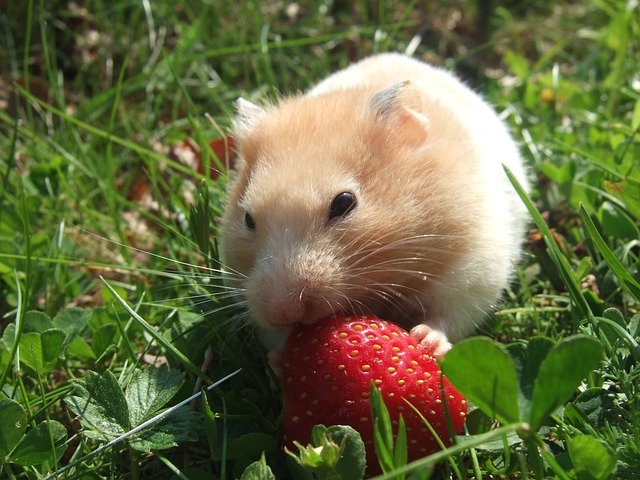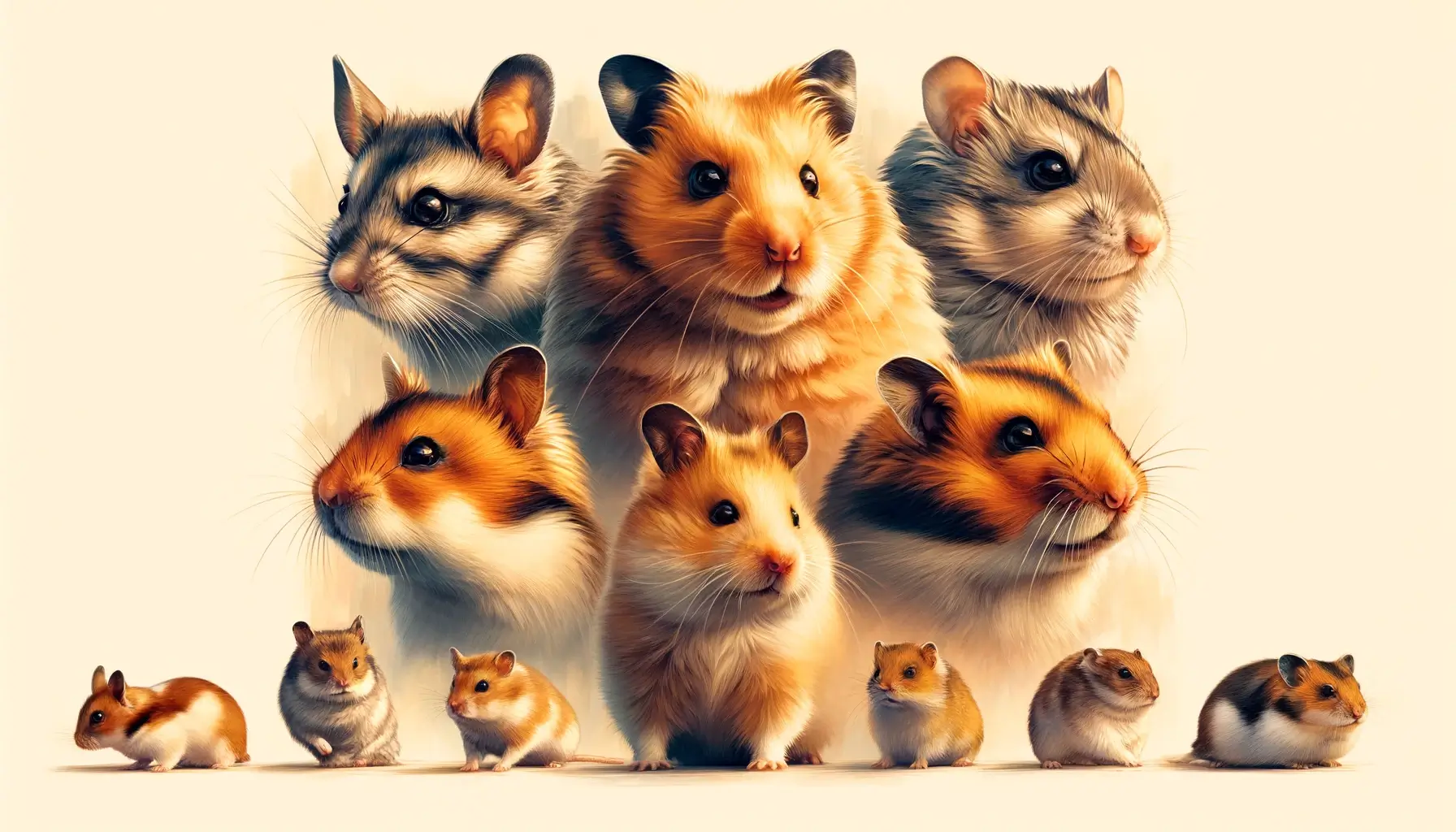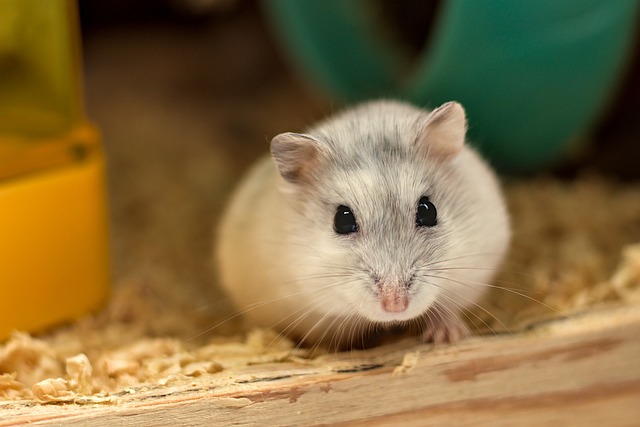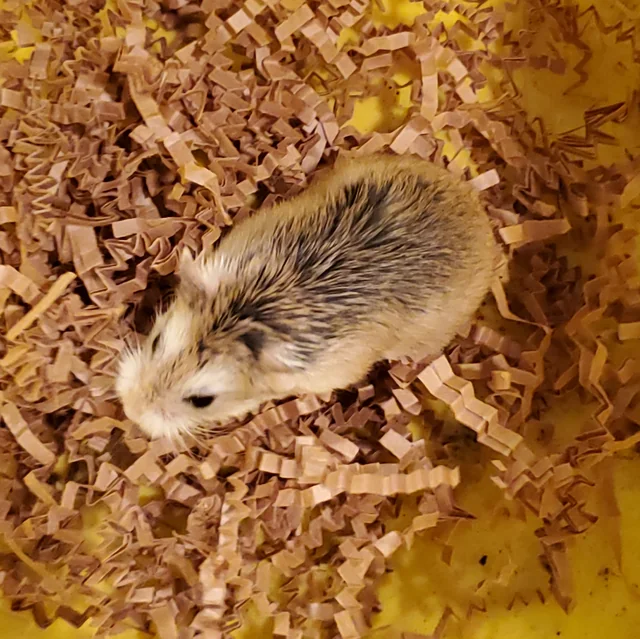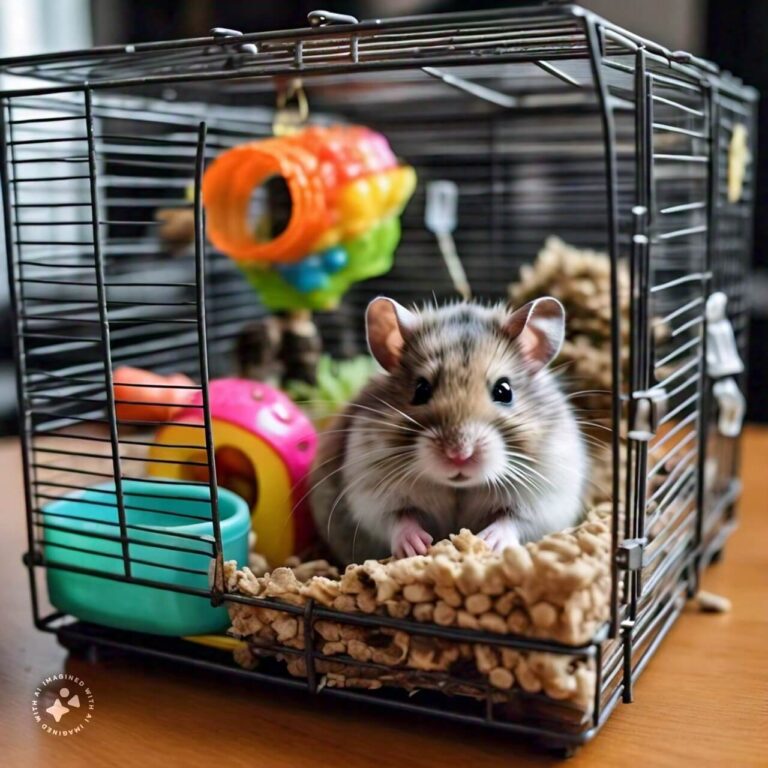How Hamsters See The World – Hamsters.pk
The Anatomy of a Hamster’s Eye: Exploring the Unique Features
Hamsters are adorable little creatures known for their cute appearance and playful nature. However, have you ever wondered about the fascinating anatomy of their eyes? In this article, we’ll delve into the unique features of a hamster’s eye and explore how these characteristics help them navigate their world.
The Size and Shape of a Hamster’s Eye
One of the most striking features of a hamster’s eye is its size relative to its body. Hamsters have large, prominent eyes that take up a significant portion of their face. This is an adaptation that allows them to have a wide field of vision, which is essential for detecting potential predators and navigating their environment.
The shape of a hamster’s eye is also notable. Unlike human eyes, which are relatively round, hamster eyes are more elliptical or almond-shaped. This shape allows them to have a broader horizontal field of view, which is particularly useful for these small, prey animals.
The Pupil and Iris
Hamsters have a unique pupil shape that sets them apart from many other mammals. Their pupils are round, similar to those of humans, but they can dilate to a much larger size relative to their eye. This adaptation allows them to take in more light in dimly lit environments, enhancing their vision in low-light conditions.
The iris of a hamster’s eye is also interesting. It can be a variety of colors, including brown, black, or even ruby red. The color of a hamster’s iris is determined by the presence or absence of pigments, similar to how human eye color is determined.
The Retina and Color Perception
The retina is the light-sensitive layer at the back of the eye that converts light into electrical signals that the brain can interpret. Hamsters have a unique arrangement of photoreceptor cells in their retina, which affects their color perception.
Hamsters are dichromatic, meaning they have two types of color receptors in their eyes. This allows them to distinguish between blue and green colors, but they have limited ability to perceive red and green hues. In contrast, humans are trichromatic, with three types of color receptors that allow us to see a broader spectrum of colors.
Adaptations for Low-Light Vision
Hamsters are crepuscular animals, meaning they are most active during dawn and dusk when light levels are low. To accommodate this lifestyle, their eyes have several adaptations that enhance their low-light vision.
In addition to their large, dilatable pupils, hamsters have a high concentration of rod cells in their retina. Rod cells are particularly sensitive to light and are responsible for vision in dim conditions. This abundance of rod cells allows hamsters to navigate and forage effectively even in low-light environments.
Furthermore, hamsters have a reflective layer behind their retina called the tapetum lucidum. This layer reflects light back through the retina, giving the photoreceptor cells a second chance to capture light. This is why hamsters’ eyes often appear to glow in the dark when light shines on them.
In conclusion, the anatomy of a hamster’s eye is a fascinating example of how these small creatures are adapted to their environment. From their large, almond-shaped eyes to their unique color perception and low-light adaptations, every aspect of a hamster’s eye serves a purpose in helping them thrive in their world.

Hamster Vision: Understanding Color Perception and Depth Perception
When it comes to understanding how hamsters perceive the world around them, it’s essential to explore their vision, particularly their color perception and depth perception. In this article, we’ll delve into the fascinating aspects of hamster vision and how it differs from human vision.
Color Perception in Hamsters
Hamsters, like many other mammals, have dichromatic vision. This means that they have two types of color receptors in their eyes, as opposed to humans who have three types (trichromatic vision). The two types of color receptors in hamsters’ eyes are sensitive to blue and green wavelengths of light.
As a result of their dichromatic vision, hamsters can distinguish between blue and green colors, but they have a limited ability to perceive red and green hues. This means that the world appears to them in shades of blue, green, and yellow, with a reduced ability to differentiate between certain colors that humans can easily distinguish.
It’s important to note that while hamsters may not see colors as vividly as humans do, their color perception is well-suited for their natural habitat and lifestyle. In the wild, hamsters are most active during dawn and dusk, when the lighting conditions are less intense and the blue-green color spectrum is more prominent.
Depth Perception in Hamsters
Depth perception is the ability to perceive the world in three dimensions and estimate the distance between objects. Hamsters, like many other small prey animals, have well-developed depth perception that helps them navigate their environment and avoid potential threats.
One of the key factors in depth perception is binocular vision, which refers to the ability to use both eyes together to create a single, unified image. Hamsters have their eyes positioned on the sides of their head, providing them with a wide field of view. While this positioning limits their binocular vision compared to humans, they still have a significant overlap between the visual fields of their left and right eyes.
This overlap allows hamsters to have some degree of stereoscopic vision, which is the ability to perceive depth based on the slight differences in the images seen by each eye. By comparing the two slightly different images, hamsters can estimate the distance and position of objects in their environment.
In addition to binocular vision, hamsters also rely on other cues to perceive depth. These include motion parallax, which is the apparent difference in the speed and direction of objects as the hamster moves, and size constancy, which is the ability to recognize that an object remains the same size even as its distance from the viewer changes.
The Importance of Hamster Vision
Understanding hamster vision is crucial for providing them with an appropriate living environment and ensuring their well-being. When setting up a hamster habitat, it’s essential to consider their visual needs and preferences.
For example, since hamsters are more sensitive to blue and green colors, providing them with toys and accessories in these colors can help stimulate their visual interest. Additionally, creating a habitat with various levels, tunnels, and hiding spots can cater to their depth perception and natural instincts to navigate complex environments.
It’s also important to be mindful of lighting conditions. As crepuscular animals, hamsters are most active during low-light periods. Providing them with a suitable light cycle that mimics natural dawn and dusk conditions can help support their visual needs and overall well-being.
In conclusion, while hamster vision may differ from human vision in terms of color perception and depth perception, it is well-adapted to their natural habitat and lifestyle. By understanding the unique aspects of hamster vision, we can create environments that cater to their visual needs and promote their overall health and happiness.
Hamsters’ Field of View: Wide-Angle Vision and Its Advantages
When it comes to understanding how hamsters perceive the world around them, one of the most fascinating aspects is their wide-angle vision. This unique feature of their eyesight plays a crucial role in their survival and navigation. In this article, we’ll explore the concept of a hamster’s field of view and the advantages it provides.
What is a Field of View?
A field of view refers to the total area that an animal can see at any given moment without moving its eyes or head. It is the extent of the observable world that is seen at any given time. The field of view varies among different animal species, depending on the placement and structure of their eyes.
In humans, the field of view is approximately 180 degrees horizontally and 135 degrees vertically. This means that we can see a relatively wide area in front of us without turning our heads.
Hamsters’ Wide-Angle Vision
Hamsters have a remarkably wide field of view compared to humans and many other mammals. Their eyes are positioned on the sides of their head, allowing them to see a much broader area without moving their head.
The exact field of view of a hamster can vary depending on the species, but in general, they have a horizontal field of view of about 180 degrees or more. This means that they can see almost everything in front of them and to their sides without turning their head.
In addition to their wide horizontal field of view, hamsters also have a good vertical field of view. They can see both above and below them, which is particularly useful for climbing and navigating complex environments.
Advantages of Wide-Angle Vision
The wide-angle vision of hamsters provides them with several advantages that are crucial for their survival in the wild and their well-being in captivity.
- Predator Detection: As small prey animals, hamsters are constantly at risk of being attacked by predators. Their wide field of view allows them to spot potential threats from various angles, giving them a better chance to escape or hide.
- Navigation: Hamsters are active and exploratory animals that require a stimulating environment. Their wide-angle vision helps them navigate complex habitats, including burrows, tunnels, and multi-level cages. They can easily detect obstacles, openings, and potential escape routes.
- Foraging: In the wild, hamsters spend a significant amount of time foraging for food. Their wide field of view enables them to scan their surroundings efficiently for potential food sources, such as seeds, insects, and vegetation.
- Social Interaction: Hamsters are social animals that communicate through various means, including body language and visual cues. Their wide-angle vision allows them to observe and respond to the behavior of their cage mates, facilitating social interaction and hierarchy establishment.
Supporting Hamsters’ Wide-Angle Vision
When caring for pet hamsters, it’s essential to provide them with an environment that supports their wide-angle vision and natural behaviors. This includes:
- Providing a spacious habitat with plenty of room for exploration and exercise.
- Including multiple levels, platforms, and hiding spots to cater to their navigational needs.
- Offering a variety of toys and enrichment items to stimulate their visual interest and foraging instincts.
- Ensuring proper lighting conditions that mimic natural daylight cycles.
By understanding and accommodating hamsters’ wide-angle vision, pet owners can create a more engaging and stimulating environment that promotes their overall health and well-being.
In conclusion, the wide-angle vision of hamsters is a remarkable adaptation that plays a vital role in their survival and quality of life. By appreciating this unique aspect of their eyesight and providing them with an appropriate environment, we can ensure that our furry friends thrive both in the wild and as cherished pets.
Adapting to Low Light: How Hamsters Navigate in Dim Environments
Hamsters are fascinating creatures that have evolved to thrive in a variety of environments, including those with low light conditions. As crepuscular animals, hamsters are most active during dawn and dusk, when light levels are naturally lower. In this article, we’ll explore the various adaptations that enable hamsters to navigate effectively in dim environments.
The Importance of Low-Light Navigation
In the wild, hamsters often inhabit burrows and underground tunnels where light is scarce. Even in captivity, hamsters are more active during the low-light hours of dawn and dusk. Being able to navigate effectively in these conditions is crucial for their survival and well-being.
Low-light navigation is essential for several reasons:
- Foraging: Hamsters need to be able to locate food sources in dimly lit environments, both in the wild and in captivity.
- Predator Avoidance: Being able to move swiftly and confidently in low light helps hamsters evade potential predators.
- Exploration: Hamsters are curious animals that require stimulation and exercise. Navigating their habitat in low light allows them to explore and engage with their surroundings.
Eye Adaptations for Low-Light Vision
Hamsters have several eye adaptations that enhance their ability to see in low-light conditions. These adaptations work together to maximize the amount of light captured by their eyes and improve their visual acuity in dim environments.
- Large, Dilatable Pupils: Hamsters have pupils that can dilate to a much larger size relative to their eye compared to humans. This allows them to take in more light, enhancing their vision in low-light conditions.
- Abundant Rod Cells: The retina of a hamster’s eye contains a high concentration of rod cells, which are photoreceptor cells that are particularly sensitive to light. The abundance of rod cells enables hamsters to detect even small amounts of light and navigate in dim environments.
- Tapetum Lucidum: Behind the retina, hamsters have a reflective layer called the tapetum lucidum. This layer reflects light back through the retina, giving the photoreceptor cells a second chance to capture light. This is why hamsters’ eyes often appear to glow in the dark when light shines on them.
Behavioral Adaptations for Low-Light Navigation
In addition to their eye adaptations, hamsters have developed behavioral strategies that help them navigate in low-light environments. These adaptations allow them to gather information about their surroundings and move confidently even when visual cues are limited.
- Whisker Sensing: Hamsters have long, sensitive whiskers that they use to gather tactile information about their environment. By brushing their whiskers against objects, they can detect obstacles, openings, and changes in texture, helping them navigate in low light.
- Scent Marking: Hamsters have scent glands that they use to mark their territory and create olfactory cues. These scent trails help them navigate familiar paths and locate important resources, such as food and nesting areas, even in dim conditions.
- Cautious Movement: When navigating in low light, hamsters often move more cautiously and deliberately. They may pause frequently to gather sensory information and assess their surroundings before proceeding.
Supporting Low-Light Navigation in Captivity
As pet owners, it’s essential to provide hamsters with an environment that supports their natural adaptations for low-light navigation. This includes:
- Providing a suitable light cycle that mimics natural dawn and dusk conditions.
- Offering a complex habitat with tunnels, hiding spots, and different textures to stimulate their whisker sensing and exploratory behaviors.
- Ensuring ample space for them to move and navigate comfortably.
- Minimizing sudden, bright light exposure during their active hours.
By understanding and accommodating hamsters’ adaptations for low-light navigation, we can create an environment that supports their natural behaviors and promotes their overall well-being.
In conclusion, hamsters have developed a remarkable set of adaptations that allow them to navigate effectively in low-light environments. From their eye structure to their behavioral strategies, these adaptations showcase the impressive evolutionary capabilities of these small mammals. By appreciating and supporting these adaptations, we can ensure that our pet hamsters thrive in captivity and experience a fulfilling life.





